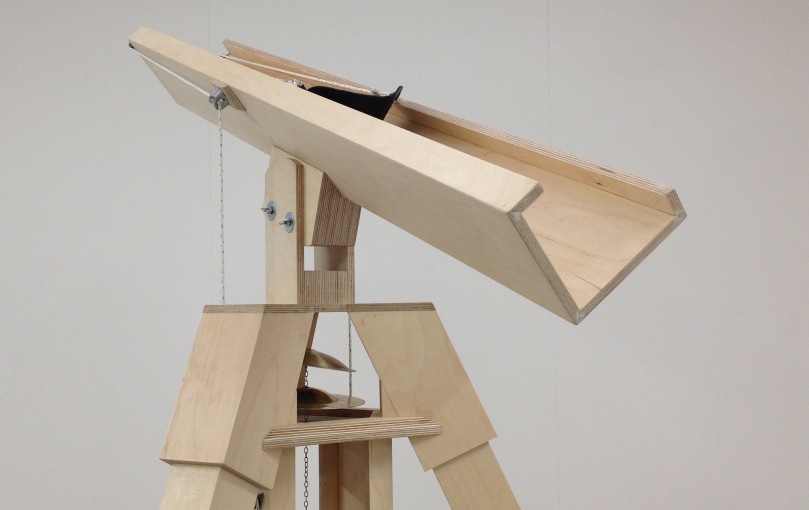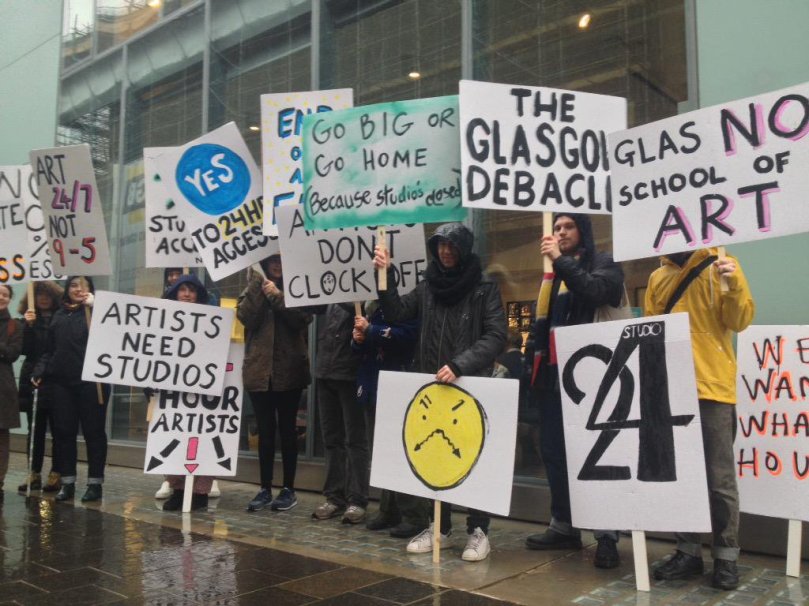
Some months have passed since I completed my MFA here in Glasgow. The last segment of that course saw me working harder than I remember as well as enduring a variety of ailments. I remember dealing with a chest infection, then a urinary infection. I had minor surgery on my foot and eventually I was also dumb enough to impale myself on a steel rod when I fell off a chair in my studio. This resulted in more surgery and medication and recovery that seemed just as debilitating as the injury itself. At the point of installing my final show, I was physically and mentally exhausted. I was signed off work for a some weeks and spent the rest of the summer having enough of a break from ‘art’ that I started feeling twitchy, although not before I was able to take stock. Now that I feel more healed and energised, I am picking up the reigns of some projects I’ve had brewing for a while and I’m aligning myself with the demands of some exhibitions and deadlines that are just coming over the horizon.
The verbal or prose treatment of an artistic practice is good for me – it’s great venting. I thought I’d clear my mental decks with a summary of the Masters experience at the Glasgow School of Art. It’ll be greatly cathartic for me personally, might be interesting reading for a handful and perhaps help potential students make their minds up when looking around for a graduate course.
John Calcutt (the acting head of the course) is a highly entertaining and charismatic figure. On one of the seemingly many introductions, he invoked the legend of the Argo – the vessel of the classics. Supposedly over two decades of sea-faring wear and tear, the boat finally returned to port without a single original timber in it’s structure. All pieces had been replaced at some point along the course of it’s adventures yet the overall structure, integrity and purpose of the ship remained whole and undiminished. John used this story as analogy to what an individual’s artistic practice could hence undergo through participation on the programme. Like all academic forays for art and the artist, the individual by and large decides their own level of involvement. Saying that, the MFA promised the potential for a deep, diagnostic analysis of the practice. The fact that many enrolled students come from such varied backgrounds (there are several from accredited disciplines that have eschewed a ‘fine art’ training, eg. photography, glass-making, architecture, etc) and differing levels of professional accomplishment evinces a flexible structure heavily reliant on self-direction. That sounded fine to me. Up until my starting the course, I knew I was achieving something but hadn’t really taken the time to ask anything much more about my practice other than the steps in the algorithms that start with research and end in a gallery product. I felt that my personal artistic ‘argument’ remained the same but that the resolution; the detail, needed to be identified – not to mention that I was suspicious of my propensity for making large, overwhelming objects for their own sake. Already I was diagnosing some kind of small, bald man-syndrome at work.
Classmates are essential. The camaraderie, the friendships and the simple exposure to other people’s methods of working are vital. Glasgow’s MFA intake is, for the time being, small. Each of the two year groups accommodate approximately twenty-five people. This ensures that everyone gets to know everyone fairly quickly and factionalism is kept to a minimum. The studio spaces are moderate to generous in size if not in the best of repair. Being situated in a single building alongside postgraduate staff offices has a way of concentrating the atmosphere and shielding the course from some of the bureaucratic static that often pervades large institutions. Unfortunately, the now famous fire that damaged so much of the Mackintosh building prompted a series of reforms around working policy and studio access that were ultimately damaging to our student experience. An institutional ‘can’t do’ attitude seemed to hang across the campus despite the best efforts of individual technicians and tutors. An almost hysterical response to potential safety issues or the offending of sensibilities in the wake of the fire exposed the fragile perception of the GSA’s ethos. It was not a happy time for management / student relations. I can’t stress enough, however, how excellent some of the tutors and technicians were in the face of all this. It was a challenging time for all.

So, on one level the school itself seemed to have become an obstacle. On the MFA, the input of the tutors was formidable. Aside from the full-time staffing of John Calcutt and Graham Ramsay, we were constantly challenged and encouraged by the relentlessly astute Sarah Tripp and the whimsical polymath, Francis Mckee. These colourful descriptors apply to my experience of the many frequent tutorials and critiques in which we were all involved. The MFA certainly didn’t scrimp when it came to tutorials. It was rare to go one week without a solid talk about progress with either the regular tutors or a visiting guest. The guest tutors were often of some note and were thus made available by means of a sign-up timetable. Some of our number were often keen to schmooze with any famous name they had access to so things could get a little frustrating for some when the appointments were booked out. Although tempers would occasionally flare, I was lucky to never feel the need for access to any one name.
Technical facilities across the school are either exemplary or woefully inadequate depending on one’s chosen disciplines. As such, this shapes the nature of the output. A new single, centralised workshop produces scheduling bottlenecks in already over-subscribed courses to the point that any project that relies on one technology is markedly vulnerable so finding a smart balance of working methods with multiple redundancies factored in is the only way to approach scheduled work, particularly at degree show times. The technicians are terribly demoralised but wonderful people to work with. A diplomatic and relaxed demeanour goes a long way when asking someone to help out.
Discussing my experience cannot help but be coloured by my output and my relationship to my working methods. Without describing actual artwork, I would say that the diagnostic nature of the MFA programme was essential to me. The course didn’t simply serve as another two years in a studio. I felt the sharp challenge of analysis and the sense of provocation provided by sharing studios with some very talented and clever people. At the postgraduate level, most artists seem to have found their voice. For my part, I think my immediate strength that I brought to the course was in technical making but it eclipsed a potential vitality or conceptual punch. Over time, I was able to apply making skills with better strategy, one that took into account my own visibility within the practice yet still didn’t overtly make me the centre of it.
For me, a problem with the Glasgow scene is that it seems hobbled by it’s own sense of fashion. Despite an assumption of creative freedom, the ever-connecting strands of contemporary art feel choked off somehow at Glasgow’s city limits. Although not parochial, there is an orthodoxy in play that tempts those comfortable in it’s embrace. The school is deeply wedded to it. This can be forgiven considering it contains a lot of young people finding their way but it seeps into the city’s professional scene too. My tutors understood my cynicism but rightly challenged me on it. They were worried I might miss something important. Anyway, I tended not to feel out any intuitive poetry in what I was doing and instead worked systematically and very, very hard.
My degree show work was cold, clinical, neat and a little violent. It was rigorous and unsentimental. The energy within it is still in me and the narrative of the slightly unhinged processes I went through to make it. It went down well enough to win me two good bursaries that I am currently preparing exhibitions for (thus my mental clearing of the decks by writing this all down). It sounds glib, but I thought that if the course could allow me to finally come up with a succinct description or statement of my artistic practice to put on my website, then I would consider that a useful benchmark. I had a tough time on the Master’s programme. The combination of work, frustration, illness and injury burned up a lot of energy but it was still a wholly worthwhile endeavour.
Images from the course and the degree show are available online.
If you’re thinking of applying, let me know if you have any questions – I’m happy to answer.
Very interesting and helpful to me. Thanks for sharing 🙂
LikeLike